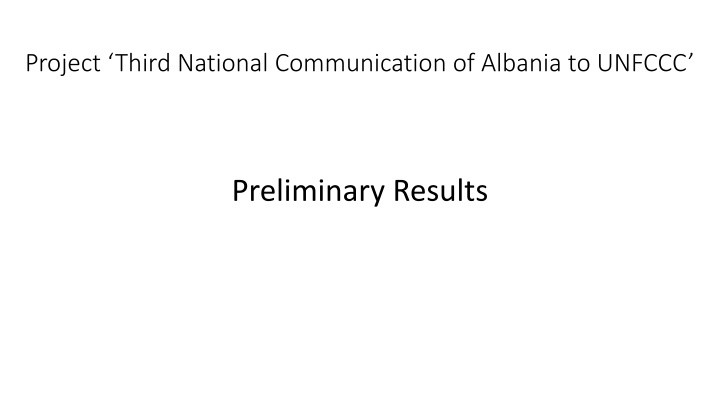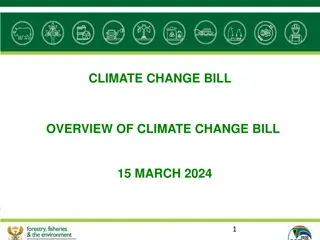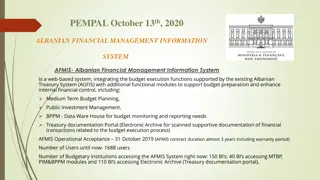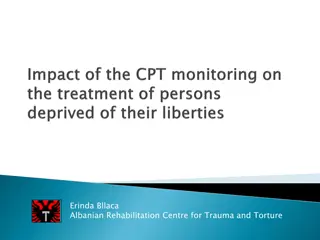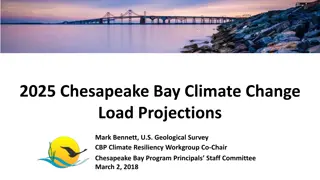Albanian National Communication on Climate Change: Preliminary Results and Projections
The Albanian National Communication to the UNFCCC presents preliminary results on greenhouse gas emissions from various sectors such as energy, transport, agriculture, and waste between 2000-2009. It also outlines the expected changes in temperature, precipitation, and sea level rise, along with integrated climate change impact assessments focusing on adaptation strategies for the Albanian coastal area up to 2050.
Download Presentation

Please find below an Image/Link to download the presentation.
The content on the website is provided AS IS for your information and personal use only. It may not be sold, licensed, or shared on other websites without obtaining consent from the author.If you encounter any issues during the download, it is possible that the publisher has removed the file from their server.
You are allowed to download the files provided on this website for personal or commercial use, subject to the condition that they are used lawfully. All files are the property of their respective owners.
The content on the website is provided AS IS for your information and personal use only. It may not be sold, licensed, or shared on other websites without obtaining consent from the author.
E N D
Presentation Transcript
Project Third National Communication of Albania to UNFCCC Preliminary Results
GHG Emissions from Energy and Transport Sector 2000 2009 [kt]
GHG Emissions from Agriculture Sector 2000 2009 [kt] CH4 emissions from manure management, in [kt] Total (CH4) emissions from eneteric fermentation, in [kt] 3.86 4 3.77 69.8867.9765.8866.37 3.72 3.67 70 3.59 3.56 3.48 63.4363.0761.81 3.5 3.26 57.67 60 3.06 2.92 2.91 54.11 3 50.7550.89 50 2.5 40 2 30 1.5 20 1 10 0.5 0 0
V&A activities under TNC Focus: Albanian coastal area Sectors/systems: water resources, agriculture, biodiversity, tourism and population, health, climate related disaster reduction Tasks: Develop the scenarios: climate changes and sealevel rise; socio-economic Integrated assessment of (in process) current climate vulnerability climate change impacts and adaptation measures Adaptation action plan based on ICZM up to 2050.
Expected changes (averages) Temperature: Annual likely up to 3.2 C(2.4-4-1 C)by 2100 Summer, extremely problematic, likely up to 5.3 C (4.6 -6.0 C) by 2100 Precipitation Annual decrease likely to up to -18.1%(80.0 to - 85.5%) by 2100 Annual precipitation changes 0 1990 2000 2010 2020 2030 2040 2050 2060 2070 2080 2090 2100 -5 A1BAIM -10 A2ASF Changes (%) Sealevel -likely to increase up to 40cm, reaching the maximum level of 73 cm by 2100 -15 B1IMA -20 B2MES -25 A1FIMI -30
Expected changes Integrated climate change impact assessment continues Summer temperature
